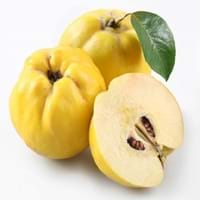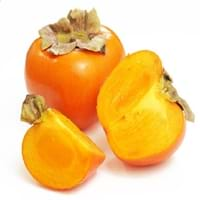Health Benefits
Cancer prevention, Cures gastro-intestinal troubles, Reduces nervous tension, Ulcer prevention
Anti-oxidant properties, Beneficial in curing fever, Cancer prevention, Heart care, Reduces nervous tension
General Benefits
Anti oxidant properties, Anti-inflammatory properties, Boosts immune system, Controls blood pressure, Digestive aid, Eye care, Helps in weight loss, Improves blood circulation, Maintains healthy cholesterol level
Anti-inflammatory properties, Boosts immune system, Controls blood pressure, Digestive aid, Eye care, Fights against infections, Helps in weight loss, Improves blood circulation
Skin Benefits
Anti-aging benefits, Reduces wrinkles
Anti-aging benefits, Brightens and lightens complexion, Reduces wrinkles
Hair Benefits
Regulates hair growth
Good conditioner, Promotes longer and healthier hair, Treatment of dandruff
Allergy Symptoms
NA
Abdominal pains, Anaphylaxis, Inflammation
Side Effects
Allergic reaction
Affects blood glucose levels, Decrease in blood sugar levels, Coagulation
Best Time to Eat
As a snack in the late afternoon, Don't consume at night and before bed, Eat the fresh ones, avoid mixing with any other foods, don't eat after meal., Morning time (before lunch)
Along with meal, As a snack in the late afternoon, Don't consume at night and before bed, Eat the fresh ones, avoid mixing with any other foods, don't eat after meal.
Vitamin A (Retinol)
Not Available
Vitamin B1 (Thiamin)
Not Available
Vitamin B2 (Riboflavin)
Not Available
Vitamin B3 (Niacin)
Not Available
Vitamin B5 (Pantothenic Acid)
Not Available
Vitamin B6 (Pyridoxin)
Not Available
Vitamin B9 (Folic acid)
Not Available
Vitamin C (Ascorbic Acid)
Calories in Fresh Fruit with Peel
Calories in Fresh Fruit without Peel
Not Available
Not Available
Calories in Frozen Form
Not Available
Not Available
Calories in Canned Form
Not Available
Not Available
Type
Tree fruit
Berry, Tree fruit
Season
Winter
Autumn, Winter
Varieties
Meech’s Prolific, Lusitanica, Champion and Vranja AGM
Early Golden, John Rick, Miller, Woolbright and Ennis
Color
Green, Yellow
Orange, Red, Yellow
Inside Color
White
Yellow
Origin
Iran, South-West Asia, Turkey
Eastern United States
Soil Type
Loam, Well-drained
Sandy loam, Well-drained
Climatic Conditions
Warm
Can tolerate wide range of climates, Sunny
Facts about
- Due to its strong & fruity aroma, brides consumed quince to ensure "perfumed lips".
- It is also called as ‘Pear of Cydonia’, being native to Caucasus and Iran.
- They call it as the ‘golden apple’ of Greek Mythology.
- It is said that formation of seeds inside the persimmon fruit shows what type of winter is coming(type of snow).
- There are about 2000 varieties of this fruit.
- The American persimmon has another name 'Possumwood'.
Top Producer
Turkey
China
Other Countries
Algeria, Argentina, Azerbaijan, China, Iran, Morocco, Serbia, Spain, Uzbekistan
Azerbaijan, Brazil, Costa Rica, Japan, Korea, Pakistan
Top Importer
United States of America
United States of America
Top Exporter
Argentina
United States of America
Botanical Name
Cydonia oblonga
Diospyros virginiana
Synonym
C. vulgaris
Not Available
Subkingdom
Tracheobionta
Tracheobionta
Division
Magnoliophyta
Magnoliophyta
Class
Magnoliopsida
Magnoliopsida
Subclass
Rosidae
Dillenhidae
Family
Rosaceae
Ebenaceae
Species
C. oblonga
D. virginiana
Generic Group
Rose
Not Available
Difference Between Quince and American Persimmon
We might think that Quince and American Persimmon are similar with respect to nutritional value and health benefits. But the nutrient content of both fruits is different. Quince and American Persimmon Facts such as their taste, shape, color, and size are also distinct. The difference between Quince and American Persimmon is explained here.
The amount of calories in 100 gm of fresh Quince and American Persimmon with peel is 57.00 kcal and 127.00 kcal and the amount of calories without peel is Not Available and Not Available respectively. Thus, Quince and American Persimmon belong to and category.These fruits might or might not differ with respect to their scientific classification. The order of Quince and American Persimmon is Rosales and Ericales respectively. Quince belongs to Rosaceae family and American Persimmon belongs to Ebenaceae family. Quince belongs to Cydonia genus of C. oblonga species and American Persimmon belongs to Diospyros genus of D. virginiana species. Beings plants, both fruits belong to Plantae Kingdom.









